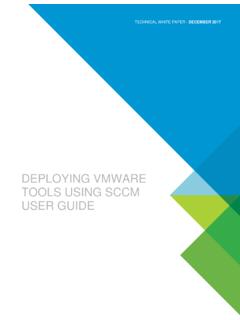Transcription of ARCHIVED DOCUMENT (COVID-19) - Centers for Disease …
1 ARCHIVED DOCUMENT (COVID-19)The following DOCUMENT is for historical purposes and is no longer being updated. Please go to the COVID-19 website for more recent Readiness and Planning Tool to Prevent the Spread of COVID-19 at Events and Gatherings As some communities in the United States begin to plan and hold events and gatherings, CDC offers the following readiness and planning tool to share ways event planners and administrators can help protect staff, volunteers, and attendees and slow the spread of COVID-19. This tool aligns with the Considerations for Events and Gatherings and includes the following: General Readiness Assessment Preparing for If Someone Gets Sick Daily/Weekly Readiness Assessment End-of-Day Actions and ResourcesEvent planners and administrators may review and complete the general readiness assessment while working with state and local officials as part of making initial preparations before the event to promote healthy behaviors, environments, and operations that reduce the spread of COVID-19.
2 The daily/weekly readiness assessment may be used to monitor and maintain recommended practices. Planning tools are also included to help event planners and administrators prepare for if someone gets sick, plan after-event actions, and address the specific needs and circumstances of the local community. Implementation should be guided by what is feasible, practical, acceptable, and tailored to the needs and context of each Principles to Keep in Mind A gathering refers to a planned or spontaneous event, indoors or outdoors, with a small number of people participating, or a large number of people in attendance. Examples of gatherings, small or large, include a community event, concert, festival, conference, parade, wedding, or sporting event. The more people an individual interacts with at a gathering and the longer that interaction lasts, the higher the individual s potential risk of becoming infected with COVID-19 and then spreading COVID-19 to others.
3 The higher the level of community transmission in the area where the gathering is held, the higher the risk of COVID-19 spreading at the gathering. The size (attendance) of an event or gathering should be determined based on state, local, territorial, or tribal safety laws and risk of COVID-19 spreading at events and gatherings increases as follows: Lowest risk: Virtual-only activities, events, and gatherings. More risk: Smaller outdoor gatherings in which individuals from different households remain spaced at least 6 feet apart, wear cloth face coverings, do not share objects, and come from the same local area ( , a community, town, city, or county). Higher risk: Medium-sized in-person gatherings that are organized/laid out to allow individuals to remain spaced at least 6 feet apart, some wear cloth face coverings and come from outside the local area ( , a community, town, city, or county).
4 Highest risk: Large in-person gatherings where it is difficult for individuals to remain spaced at least 6 feet apart, do not wear cloth face coverings and travel from outside the local area. Events and Gatherings: Readiness and Planning ToolFor accessible version, please visit: 317934-A December 15, 2020 3:11 and Gatherings: General Readiness AssessmentUse the following tool when making initial preparation before the event to promote healthy behaviors, environments, and operations that reduce the spread of and ProceduresPoint Person(s): _____Review relevant local/state regulatory agency policies and orders, such as those related to events, gatherings, and travel. Consult local health officials about recommended COVID-19 testing policies for events and gatherings. Consult with the venue operators about their COVID-19 policies prior to the event.
5 Develop a plan to conduct daily health checks ( , temperature screening and/or symptom checking) of staff and attendees. Develop a plan to allow for social distancing before, during, and after the event ( , limiting attendance and modifying layouts before the event, providing physical barriers during the event and staggering exit times after the event). Consider limiting event attendance to staff and attendees who live in the local area ( , community, city, town, or county) to reduce risk of spreading the virus from areas with higher levels of COVID-19. If attendance is open to staff and guests from other communities, inform attendees in advance so they can make an informed decision whether they will participate. Develop online attendance options in addition to in-person attendance to help reduce the number of attendees at the event.
6 Develop a flexible refund policy. Designate a staff person responsible for responding to all COVID-19 related situations and concerns. Make sure other staff and attendees know how to contact this person. Facilities and SuppliesPoint Person(s): _____Obtain supplies including: soap water for hand hygiene hand sanitizer (at least 60% alcohol) paper towels tissues cleaning supplies EPA approved disinfection supplies cloth face coverings no-touch/foot pedal trash cans no-touch soap/hand sanitizer dispensers gloves disposable food service items other: _____Develop a schedule for increased routine cleaning and disinfection. Close shared spaces ( , a lounge); otherwise develop a plan for staggered use of these spaces and cleaning and disinfecting. Develop a plan for the safe and correct use and storage of cleaners and disinfectants, including storing products away from children.
7 Education and TrainingPoint Person(s): _____Create a plan for educating staff and attendees to ensure they know that they should not come to the event if they become sick with COVID-19 symptoms, test positive for COVID-19, or have been exposed to someone with symptoms or someone suspected or confirmed to have COVID-19. Make sure they know that if they get sick at the event, they should notify event administrators ( , the designated COVID-19 point of contact) right away. Develop protocols to educate staff on flexible work and leave policies that encourage sick staff members to stay at home without fear of job loss or other consequences. Create a plan for educating staff and attendees about who should wear cloth face coverings, and communicate the importance of wearing them to both staff and attendees.
8 Cloth face coverings should not be placed on. children younger than 2 years old anyone who has trouble breathing or is unconscious anyone who is incapacitated or otherwise unable to remove the cover without help Create information on proper use, removal, and washing of cloth face coverings and distribute to staff members. Create and implement training to be delivered to staff on all COVID-19 safety protocols: Conduct training virtually or maintain social distancing during training Other: _____3 Events and Gatherings: General Readiness Assessment (continued from previous page)Policies and ProceduresDevelop policies that encourage sick staff members to stay at home without fear of job loss or other consequences. Protect their privacy, particularly for those with underlying medical conditions and at higher risk for severe illness).
9 Develop options for staff at higher risk for severe illness ( , telework or virtual learning opportunities). Develop flexible sick leave policies and practices. Develop options for flexible worksites ( , telework) and flexible work hours ( , staggered shifts). Develop a plan to monitor absenteeism of staff, cross-train staff, and create a roster of trained back-up staff. Develop a transportation and parking plan to limit contact between attendees ( , staggered arrival and ride share drop-off times or locations). Develop a plan for if someone gets sick or shows symptoms of COVID-19 while at the event or venue. (See Preparing for If Someone Gets Sick). Develop a plan to safely serve food, beverages, and merchandise, if applicable. Refer to CDC s COVID-19 considerations for restaurants and bars for guidance.
10 Other: _____Facilities and SuppliesMake sure ventilation systems operate properly. If using fans, make sure they do not blow from one person onto another, and increase circulation of outdoor air as much as possible ( , opening windows and doors). Make sure water systems and features are safe to use after a prolonged facility shutdown. Develop a plan to use touchless payment options . Develop a plan to use multiple entrances and exits to discourage crowding in waiting areas. Develop a plan to change seating layout or availability of seating, or block off rows or sections so that attendees can stay at least 6 feet apart. Create and install physical barriers, such as sneeze guards and partitions, in areas where it is difficult for individuals to remain at least 6 feet apart. Create physical guides, such as tape on floors and signs on walls, to promote social distancing.












